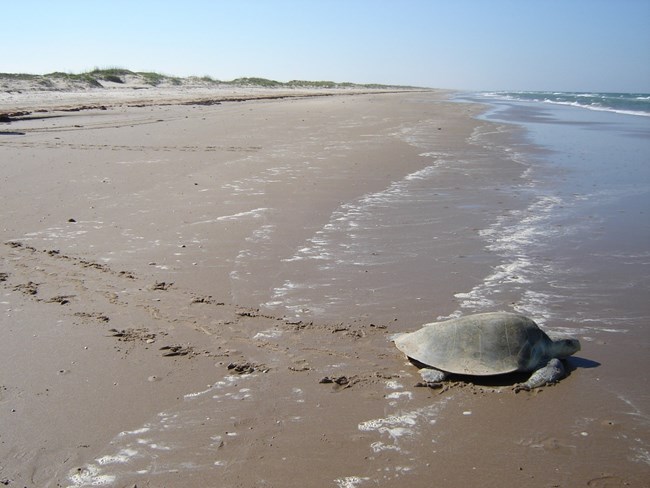Learn about NRCAs
The Natural Resource Condition Assessment (NRCA) Program provides framework, funding, and publishing support to parks to aid in the synthesis and documentation of natural resource conditions. Condition assessment reports are a tool to describe selected park resources, and record a snapshot of their current condition, identify trends, and identify potential or current threats and stressors. Understanding the condition and trend of natural resources is key for parks and NPS planners to appropriately prioritize and allocate stewardship resources.

NPS Photo.
The National Seashore and surrounding waters provide important habitat for marine and terrestrial plants and animals, including a number of rare, threatened, and endangered species. Situated along the Central Flyway, Padre Island is a globally important area for over 380 migratory, overwintering, and resident bird species.
Traditional NRCA Report: 2014
In an effort to better understand the natural resources and processes present in Padre Island National Seashore, a Natural Resource Condition Assessment was conducted and published in 2014. Representatives from the National Park Service and St. Mary’s University of Minnesota collaborated to determine park needs and available data. This team chose to evaluate 17 resource topics:
- Terrestrial vegetation communities |
- Algal mats and mud flats |
|||||
- Seagrass community |
- Macroinvertibrates |
|||||
- Emergent wetland and pond communities |
- Reptiles |
|||||
- Migratory bird species |
- Sea turtles |
|||||
- Resident bird species |
- Amphibians |
|||||
- Colonial waterbirds |
- Water quality |
|||||
- Coyotes |
- Air quality |
|||||
- Small mammals |
- Coastal dunes and beaches |
|||||
|
|
- Dark night skies |
Many of the resource topics evaluated were not assigned a condition rating due to lack of historical data, current information, or clear understanding of reference conditions. The five resource topics that were rated (colonial waterbirds, sea turtles, water quality, air quality and dark night skies) were assigned a condition of moderate concern. Several threats and stressors influence the condition of multiple resources throughout Padre Island National Seashore. These include energy development (e.g., oil, gas, and wind), extreme weather events, relative sea level rise, and human impacts. Padre Island National Seashore is a very unique and diverse park that supports a variety of unique ecological communities and wildlife populations. In order for managers to better understand the health, integrity, and trends of these valuable resources, additional research is needed for the specified components identified in this study.
For other reports and natural resource datasets visit the NPS Data Store.
Source: NPS DataStore Collection 7765 (results presented are a subset). To search for additional information, visit the NPS DataStore.
Last updated: February 24, 2025
